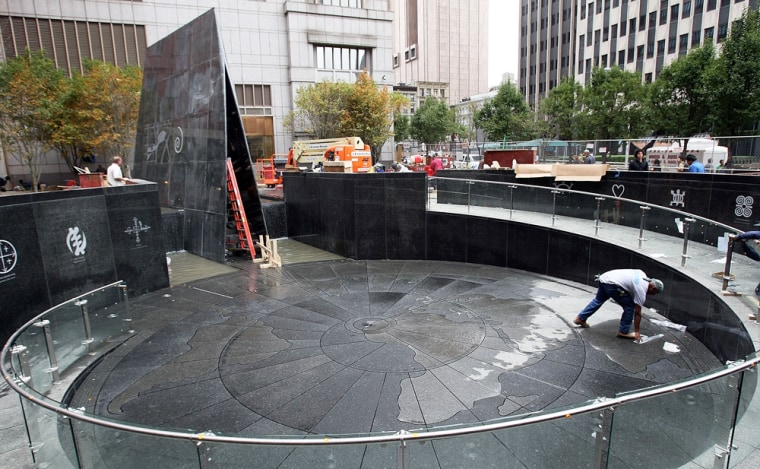Workers polished the granite and tended to other last-minute details Friday before a dedication ceremony at a memorial at the African Burial Ground, where free blacks and slaves were buried more than two centuries ago.
The ceremony at the lower Manhattan site comes 16 years after bones were rediscovered there.
Starting Friday afternoon, visitors can enter a 20-foot-high chamber of gray stone with water elements running beside it. Designer Rodney Leon stood inside the chamber before the dedication, his voice echoing inside the granite.
“Your voice is projected here,” he said. “Hopefully, it can be heard not only in the immediate area, but by the ancestors too.”
Alongside the chamber sits a circular court, with a map inscribed into the center. The majority of the space is green, with seven grassy mounds marking the spots where some of the disinterred bones were reburied four years ago.
Secretary of the Interior Dirk Kempthorne and poet Maya Angelou were among the invited guests.
Until the burial ground was closed just before the turn of the 19th century, it served as the final resting place for tens of thousands of people of African descent. The cemetery was forgotten as the city expanded above and around it, eventually burying the site more than 20 feet underground.
It was rediscovered — along with more than 400 sets of remains — during excavations for a federal building in 1991. The burial ground, most of which still lies deep beneath sidewalks, buildings and streets, was designated a national historic landmark in 1993.
Last year, the site was declared a national monument.
